The development of MXenes composite materials: interface control and structural design
QQ Academic Group: 1092348845
Detailed
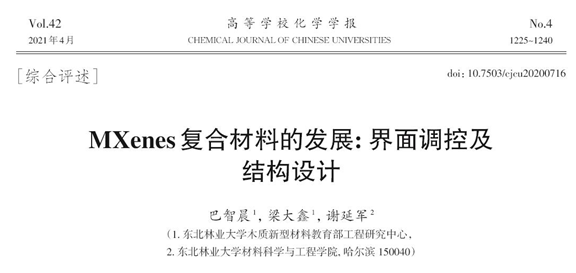

Two-dimensional transition metal carbon (nitrogen) compounds (MXenes), as a new class of two-dimensional materials, have unique hydrophilicity, excellent mechanical properties, abundant surface functional groups, high electrical conductivity, photothermal, and photoelectric effects. It has become a research hotspot and is widely used in electromagnetic shielding, electrochemical energy storage, biomedicine, separation, sensors, and seawater desalination. Although MXenes has these excellent properties, its poor compatibility with hydrophobic polymers, negatively charged functional groups hinder electrolyte transport and easy oxidation, etc. restrict its practical application. In recent years, through the interface control of MXenes to solve its inherent defects, and on this basis, the targeted structural design of MXenes to improve the stability of the interface, its performance has been further improved.

Recently, the team of Professor Xie Yanjun and Associate Professor Liang Daxin from the School of Materials Science and Engineering of Northeast Forestry University published a review article titled "Development of MXenes Composite Materials: Interface Control and Structural Design" in the "Three Highs" journal "Chemical Journal of Colleges and Universities". The first author is Ba Zhichen, a doctoral student. The article takes the interface regulation and structure design of two-dimensional transition metal carbon (nitrogen) compounds (MXenes) as the subject, systematically reviews the research progress of MXenes composite materials, and focuses on the controllable preparation, conventional characterization and hot spots of MXenes composite materials. research direction. In addition, the article also focuses on the structure and properties of MXenes and the interface control methods of MXenes in composites, and elaborates the structural design of MXenes composites.


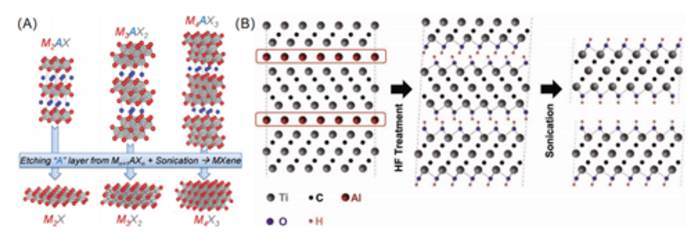
Figure 1 (A) MAX phase structure and its corresponding MXene; (B) Ti3AlC2 preparation process and multilayer/single layer structure
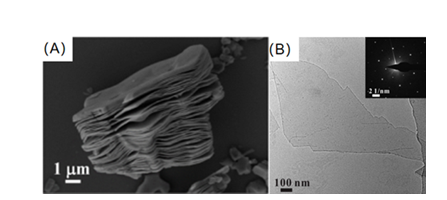
Figure 2 (A) SEM of multi-layer MXene; (B) TEM image and SAED pattern of single-layer MXene

Figure 3 Three-dimensional structure model of MXene with different surface atomic arrangements: side view (A) structure type I, (B) structure type II, (C) structure type III; (D) and (E) are (A) and (E) respectively (B) the top view, (C) is the combination of structure type I and II
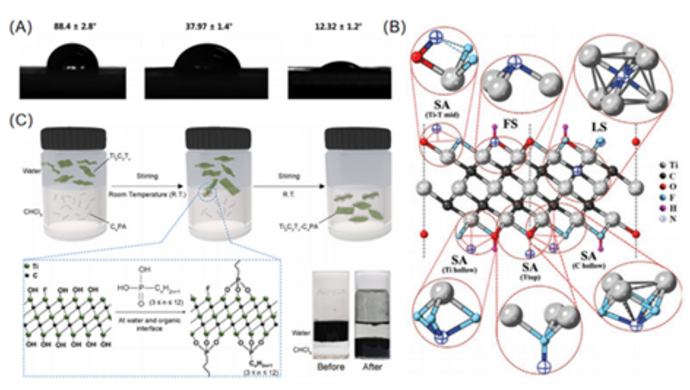
Figure 4 Contact angle test diagrams of Ti3C2, F-Ti3C2 and TMA-Ti3C2 (from left to right); (B) schematic diagram of N doping; (C) schematic diagram of the process of grafting MXene with alkylphosphonic acid and samples before and after modification
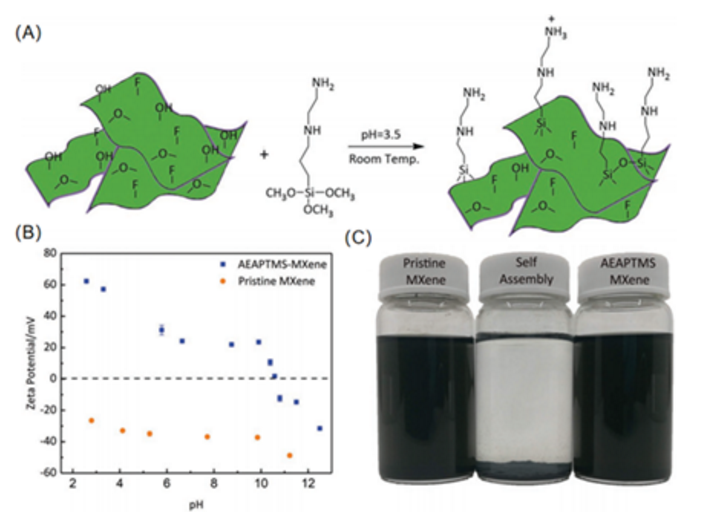
Figure 5 (A) Schematic diagram of MXene modified by silane coupling agent; (B) curve of zeta potential of MXene and AEAPTMS-MXene as a function of pH; (C) sample state diagram after mixing positively charged functionalized MXene and negatively charged MXene

Figure 6 (A) Schematic diagram of the MXene interface layer and the binding energy of different functional groups with iodine atoms; (B) Schematic diagram of the preparation of CTAB modified MXene (C) PANI/MXene preparation diagram.

Figure 7 (A) Schematic diagram of preparation of MXene/PDAC layer; (B) photos of MXene coated on different surfaces; (C) Terrain sensor test
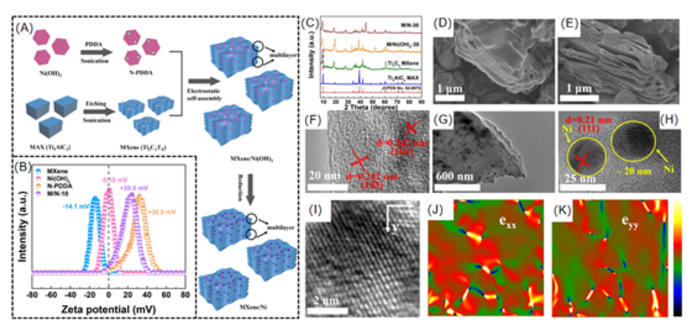
Figure 8 Related characterization of Ni modified MXene
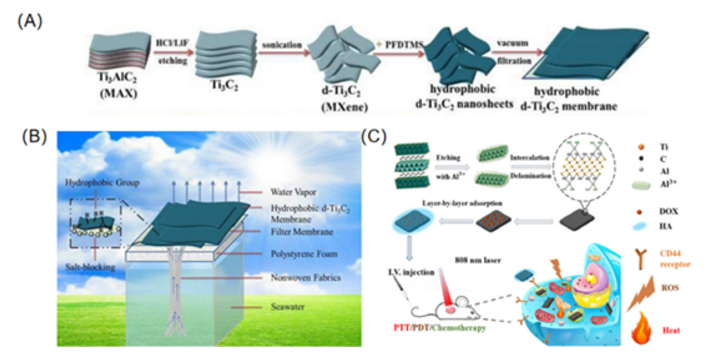
Figure 9 MXene seawater desalination membrane, chemotherapy and physical therapy applications.
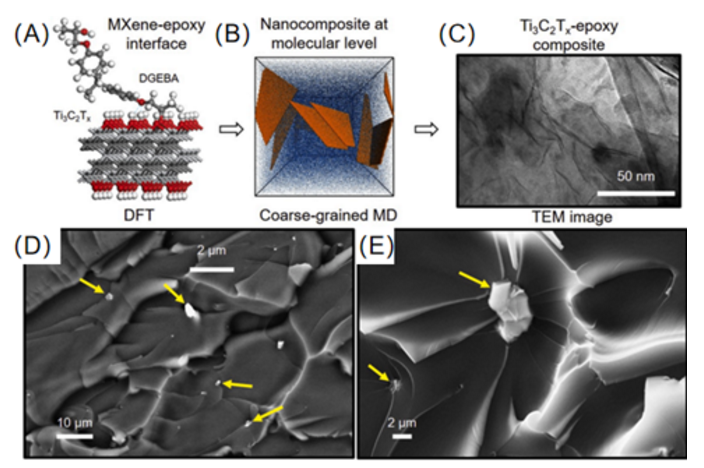
Figure 10 Schematic diagram of MXene interface composite
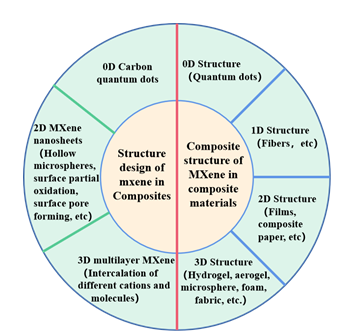
Figure 11 Structural design of MXene composite
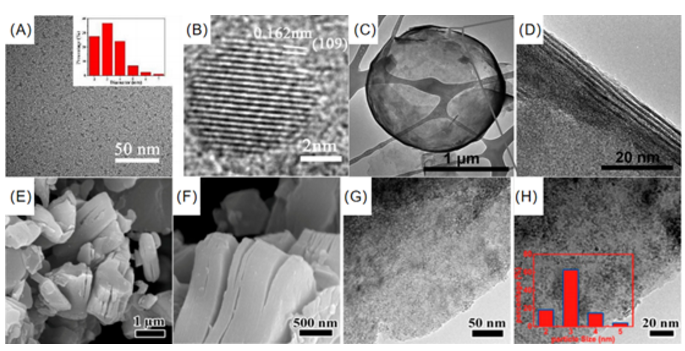
Figure 12 MXene in different dimensions

Figure 13 Schematic diagram of JANUS structure
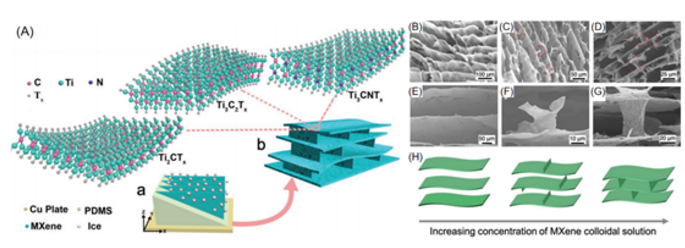
Figure 14 MXene gradient cooling to prepare anisotropic structure

Through a full understanding of the structure and properties of MXenes, one can recognize the advantages and applicable fields of MXenes, and at the same time lay a theoretical foundation for its interface regulation and structural optimization. Abundant functional groups can be formed on the surface of MXenes by etching, intercalation and other methods, and controlled by different physical and chemical means (functional group removal or replacement, doping, grafting, etc.) to further improve the performance of MXenes composites. On this basis, the structure of MXenes in the composite material is optimized to improve the structural stability and interface bonding strength of the composite material, which can further improve its performance. Through the summary of related research work, it can be seen that after modification and structural optimization of MXenes, the electrochemical, photothermal, microwave absorption, hydrophilic and hydrophobic properties have been greatly improved. The thermal stability, chemical stability and oxidation resistance of MXenes can be improved by chemical regulation of the surface of MXenes. Finally, for structural design, the current main focus is the design of MXenes two-dimensional nanosheet structure and the research of two-dimensional and three-dimensional composite structures. It is necessary to explore the influence mechanism of MXenes on the performance of composite materials on the existing basis, so as to help deepen its performance. Understanding and regulation.
At the end of the article, the current problems and challenges in the research of MXenes composites in the field of controllable device and interface structure dependence are discussed, and the future breakthroughs in the research of MXenes composites and heterogeneous devices are expected.
- Previous: A review of "JMCA" by
- Next: MXene breakthrough: Na


 mxene academic
mxene academic
